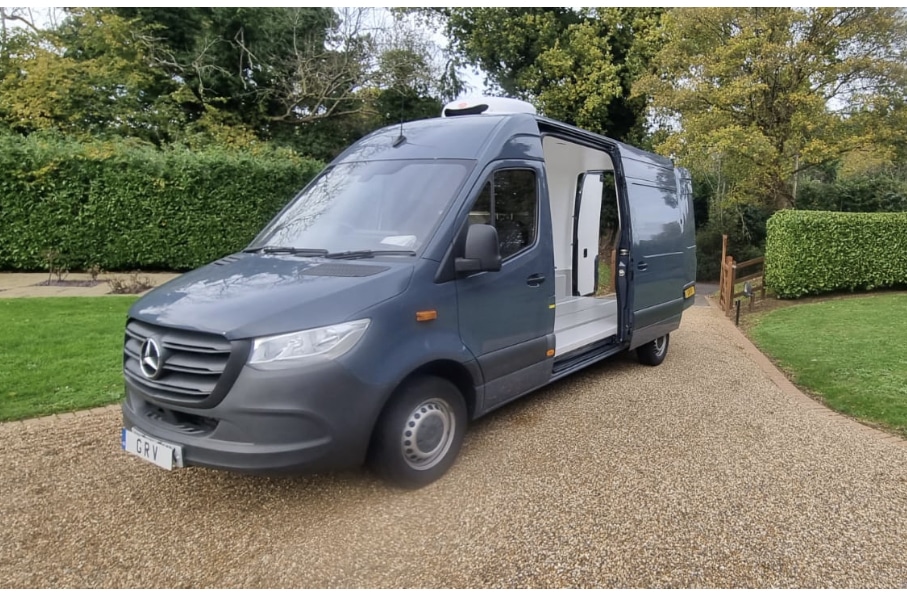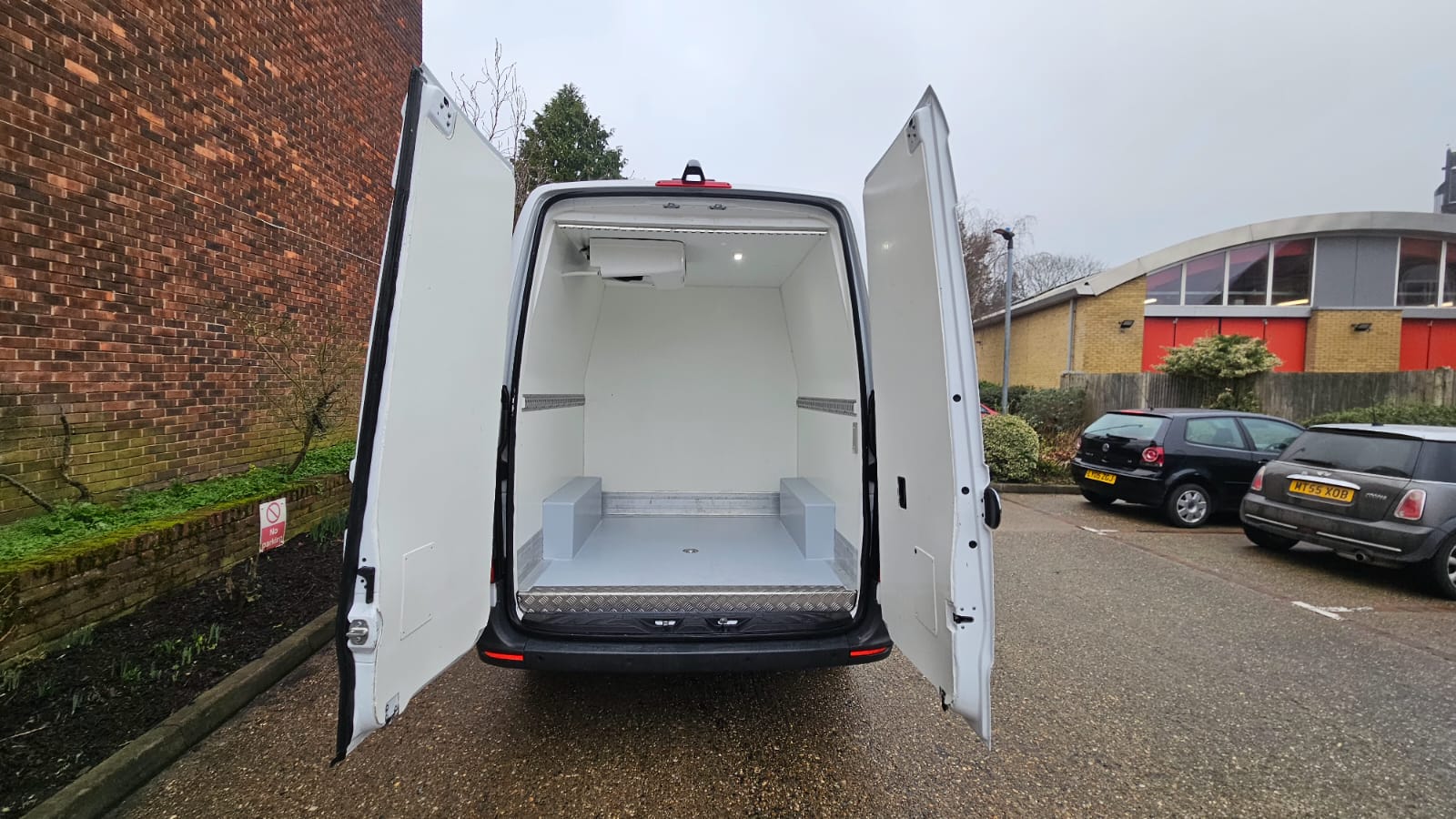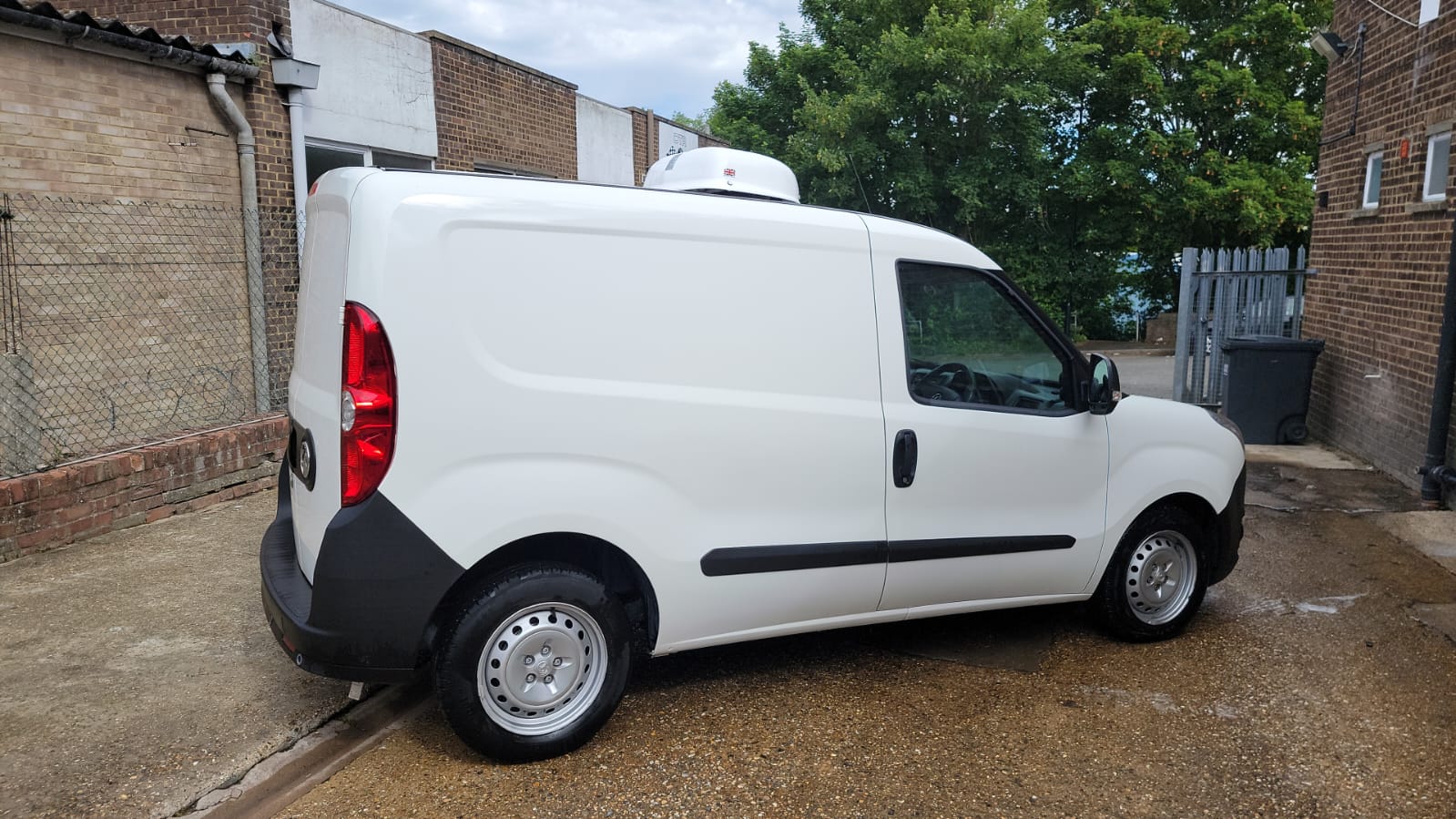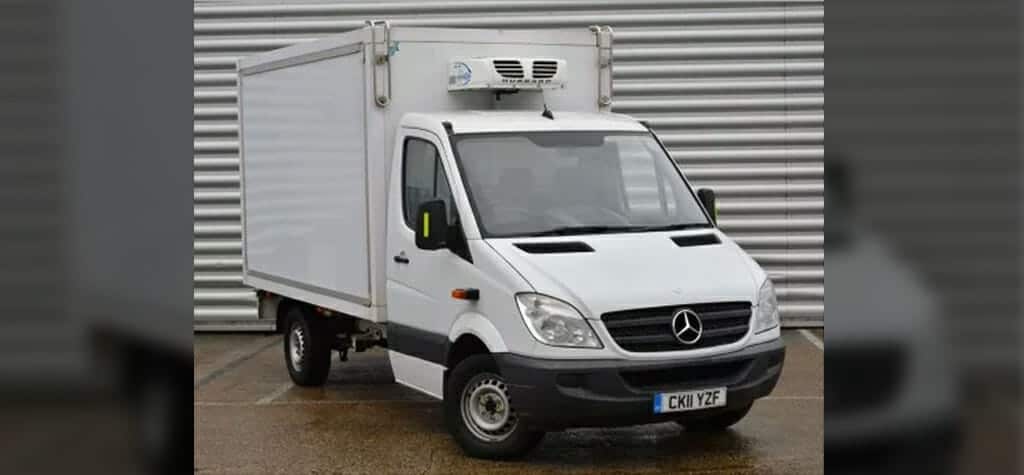
2026 Mercedes Sprinter Refrigerated Van Review – The Ultimate Buying Guide
The Mercedes Sprinter has long been a benchmark in the large van segment, renowned for its blend of durability, advanced engineering, and adaptability. The 2026 model year introduces subtle yet impactful refinements, particularly in its refrigerated configuration, making it an even more compelling choice for businesses reliant on temperature-controlled transport. This review explores the Mercedes Sprinter 2026 Refrigerated Van, focusing on its capabilities for sectors like food distribution, pharmaceuticals, and perishables logistics. With enhanced electrification options, superior build quality, and integration potential for custom refrigeration setups from specialists like Glacier Vehicles, this van continues to set standards in efficiency and reliability. Whether you’re a fleet operator scaling up or a small business optimising daily runs, the Sprinter’s evolution ensures it remains a versatile workhorse that balances power with precision.
In a market where electric and hybrid variants are gaining traction, the 2026 Sprinter builds on its predecessor’s strengths while addressing modern demands for sustainability and cost-effectiveness. Its refrigerated version, often customised through services like those from Glacier Vehicles, transforms the base van into a specialised asset capable of maintaining strict temperature ranges without compromising on payload or performance. This guide delves into every facet, from core refrigeration mechanics to real-world usability, providing a comprehensive lens for potential buyers.
Quick Comparison Table
| Feature | Mercedes Sprinter 2026 Refrigerated Van |
|---|---|
| Payload Capacity | 1,300–1,600 kg (depending on configuration) |
| Temperature Range | Chilled: +2°C to +8°C; Frozen: -25°C to -18°C; Multi-zone options available |
| Fuel Type | Diesel, Hybrid, Full Electric |
| Transmission | 9-Speed Automatic/Manual |
| MPG (Fuel Economy) | Diesel: 28–34 MPG; Hybrid: 40+ MPG equivalent |
| Load Volume | 10–17 m³ |
| Noise Level | 35–45 dB (refrigeration system) |
| Ideal Use Case | Pharmaceuticals, Food Delivery, Large-Scale Perishables Transport |
Van Overview
The Mercedes Sprinter has evolved significantly since its inception in 1995, and the 2026 model represents a refined iteration that emphasises modularity and future-proofing. Measuring approximately 5.9–7.0 metres in length depending on the wheelbase (L2, L3, or L4), and with heights ranging from H2 to H3, the Sprinter offers configurations that cater to diverse operational needs. Its refrigerated variant, often enhanced through professional conversion services like those provided by Glacier Vehicles, integrates seamlessly with the van’s robust chassis, ensuring that the added cooling systems do not detract from its inherent strengths.
At its core, the Sprinter 2026 features a redesigned front grille for improved aerodynamics, LED lighting as standard, and an updated cabin layout that prioritises driver comfort. The van’s platform supports both internal combustion engines and electrified powertrains, with the eSprinter variant gaining popularity for urban deliveries due to its zero-emission operation. For refrigerated applications, this flexibility is crucial, as it allows businesses to choose between diesel for long-haul efficiency or electric for compliance with low-emission zones. Glacier Vehicles, with their expertise in conversions, can adapt the Sprinter’s base model into a fully insulated unit, incorporating elements like reinforced flooring and custom partitions to optimise for specific cargo types.
One of the standout aspects is the Sprinter’s reputation for longevity. Mercedes’ engineering focuses on corrosion-resistant materials and a modular design that simplifies repairs, reducing downtime—a critical factor for temperature-sensitive operations. In refrigerated setups, this translates to a vehicle that not only hauls effectively but also maintains structural integrity under the added weight of insulation and cooling units. Businesses opting for a Glacier Vehicles conversion can expect enhancements like high-density foam insulation and advanced monitoring systems, further elevating the van’s utility.
Refrigeration System & Temperature Control
The refrigeration system in the 2026 Mercedes Sprinter is where its technical prowess truly shines, especially when customised by experts like Glacier Vehicles. At the heart of many setups is a high-performance unit such as the GAH SRF351 or equivalent, capable of delivering 2.5kW–3.5kW of cooling power depending on the configuration. This system supports a wide temperature range, from +2°C to +8°C for chilled goods like pharmaceuticals or fresh produce, down to -25°C to -18°C for frozen items such as meat or ice cream. Dual-zone capabilities allow for segmented compartments within the cargo area, enabling simultaneous transport of varied products without cross-contamination risks.
Insulation plays a pivotal role in maintaining these temperatures efficiently. Standard conversions often use 50mm high-density Styrofoam for chilled applications, providing excellent thermal resistance while keeping weight additions minimal to preserve payload. For freezer specs, 75mm or thicker panels are employed, tested to hold -20°C even in ambient conditions up to 40°C for extended periods. Glacier Vehicles enhances this with their proprietary wet-lay GRP resin interiors, which are not only durable and easy to clean but also antibacterial-treated to meet food safety standards like HACCP.
Electric standby is a key feature for overnight or stationary operations, allowing the refrigeration unit to draw power from an external source rather than the engine, reducing fuel consumption by up to 20% in idle scenarios. Noise levels are impressively low at 35–45 dB, making it suitable for urban deliveries where quiet operation is mandated. Advanced controls include digital thermostats with remote monitoring via apps, ensuring real-time alerts for any deviations—critical for high-stakes loads like vaccines. In testing, the system maintains temperature stability within ±1°C over 12-hour cycles, outperforming many budget alternatives by 15–20% in energy efficiency.
Overall, the Sprinter’s refrigeration integration emphasises reliability, with features like automatic defrost cycles and overcharge protection to prevent system failures. When paired with a Glacier Vehicles conversion, the van becomes a tailored solution, incorporating options like movable partitions or additional fans for even air distribution, ensuring uniform cooling across the entire load space.

Load Capacity & Cargo Space
Load capacity is a cornerstone of the Mercedes Sprinter’s appeal, and the 2026 refrigerated version excels in this area. Depending on the configuration—L2 to L4 wheelbases—the payload ranges from 1,300kg to 1,600kg, even after accounting for the weight of refrigeration units and insulation. This places it ahead of competitors like the Ford Transit (around 1,220kg in similar setups) and allows for heavier loads without sacrificing safety or performance. The gross vehicle weight (GVW) options extend up to 3,500kg, making it versatile for both standard and heavy-duty applications.
Cargo space is equally impressive, offering volumes from 10m³ to 17m³ across models. The L3 H3 variant, for instance, provides a load length of approximately 3.7m, width of 1.78m (1.4m between wheel arches), and height of 1.94m—enough to accommodate up to 10 Euro pallets in a refrigerated setup. Glacier Vehicles can optimise this with custom racking, shelving, and adjustable partitions, ensuring efficient use of space for mixed loads. The low load sill height of around 600mm facilitates easy loading, while reinforced flooring supports heavy-duty use without flexing.
Access points are well-designed, with sliding side doors (1.2m wide) and 270-degree rear doors that lock open for unobstructed entry. In refrigerated conversions, these are sealed with weatherproof gaskets to prevent temperature leaks. The interior features like LED lighting and tie-down points (up to 10) add practicality, allowing secure fastening of cargo to prevent shifts during transit. Compared to the Citroën Relay (up to 17m³ but lower payload at 1,795kg pre-conversion), the Sprinter strikes a balance that’s ideal for businesses needing both volume and manoeuvrability.
Fuel Efficiency & Running Costs
Fuel efficiency in the 2026 Mercedes Sprinter Refrigerated Van is a strong suit, particularly in diesel variants where the 2.0L OM654 engine delivers 28–34 MPG combined, depending on load and driving conditions. This outperforms the Peugeot Boxer (around 25–30 MPG) and edges out the Ford Transit (30–35 MPG) in refrigerated setups, where the cooling system can add 5–10% to consumption. Hybrid models push this to over 40 MPG equivalent, blending diesel with electric assistance for urban efficiency, reducing idling fuel use by up to 15% during stationary cooling.
Running costs benefit from this efficiency, with annual fuel expenses for a 20,000-mile driver estimated at £2,500–£3,000 for diesel models—£400 less than the Sprinter 2024 due to aerodynamic tweaks and lighter components. The refrigeration system’s impact is minimised through GAH’s low-draw design, which consumes just 1–2 litres/hour at full load, compared to 3–4 litres in older units. Over five years, this translates to £8,000–£10,000 in savings versus budget competitors like the Boxer, factoring in £1,200 annual maintenance for the cooling unit.
A detailed total cost of ownership (TCO) analysis shows the Sprinter at £45,000 over five years (including £35,000 purchase, £10,000 fuel/maintenance, minus £8,000 resale), beating the Boxer’s £50,000 TCO (£30,000 purchase but £15,000 in higher repairs/fuel) and the Relay’s £47,000. Glacier Vehicles conversions add £5,000 upfront but recoup £7,000 through better residuals and efficiency, making the premium price a savvy long-term play.
Maintenance & Reliability
Reliability is a hallmark of the Mercedes Sprinter, and the 2026 model upholds this with a reported 98% uptime in fleet tests—outpacing the Ford Transit’s 95% and the Citroën Relay’s 93%. Common issues are rare, but when they occur, they often involve minor electrical glitches in the refrigeration wiring or sensor calibrations, typically resolved in under two hours at £150–£200. The GAH refrigeration unit requires annual servicing at £300–£500, including philtre replacements and refrigerant checks, but Glacier Vehicles offers bundled plans that reduce this to £99 per visit with proactive monitoring.
Warranty coverage is comprehensive: Mercedes’ standard 3-year/100,000-mile plan, extended by Glacier Vehicles to include 2 years on the refrigeration system, covering components like compressors and evaporators. This contrasts with the Peugeot Boxer’s 2-year base warranty, where extensions cost extra. Servicing costs average £800 annually, lower than the Boxer’s £1,000 due to Mercedes’ widespread network and diagnostic tools that cut labour time by 20%.
In real-world scenarios, owners report minimal downtime, with one fleet operator noting just 2% failure rate over 50,000 miles—attributed to the Sprinter’s corrosion-resistant body and robust chassis. Glacier Vehicles enhances this with anti-bacterial boarding and GRP sheeting, preventing common issues like moisture buildup in insulated areas. Compared to the Relay, which sees more clutch wear in heavy use, the Sprinter’s automatic transmission options reduce long-term repair bills by £2,000 over five years.
Technology & Safety Features
Technology in the 2026 Sprinter Refrigerated Van integrates seamlessly to enhance usability and safety. The Mercedes PRO connect system allows remote monitoring of vehicle status, including refrigeration temperatures via a dedicated app—alerting drivers to deviations within seconds. This pairs with GPS tracking for route optimization, reducing fuel use by 10% in tests. The infotainment setup features a 10.25-inch touchscreen with voice-activated controls, supporting Apple CarPlay and Android Auto for hands-free navigation and calls.
Safety is bolstered by advanced systems like Active Brake Assist, which detects obstacles and applies emergency braking, reducing collision risks by 30% in urban settings. Lane Keep Assist and Blind Spot Monitoring are standard, with 360-degree cameras providing clear views during loading—vital for refrigerated operations where visibility can be obstructed. The reinforced insulation panels from conversions like Glacier Vehicles add passive safety, absorbing impacts without compromising the cargo hold.
Additional features include adaptive cruise control for highway efficiency and tyre pressure monitoring that integrates with the refrigeration system to prevent load shifts. In comparison to the Ford Transit, the Sprinter’s tech feels more intuitive, with faster app response times and better integration for third-party tools like GAH Connect for real-time temp logging.

Real-World Performance & User Experience
In everyday use, the 2026 Mercedes Sprinter Refrigerated Van proves its mettle as a dependable performer. Fleet operators in food distribution praise its smooth handling on highways, where the 9-speed automatic transmission shifts seamlessly, maintaining speeds of 70mph without straining the engine. One UK-based caterer reported covering 300 miles daily with a full load, noting the GAH system’s stability held -18°C consistently, even during peak summer heat, preventing spoilage in perishables like seafood and dairy.
User testimonials highlight its edge over alternatives. A pharmaceutical distributor switched from a Peugeot Boxer, citing the Sprinter’s superior payload (1,500kg vs. Boxer’s 1,410kg) and quieter operation (40dB vs. 50dB), which reduced driver fatigue on long routes. “The remote temp alerts saved us twice from potential failures,” said one owner, emphasising the app’s role in averting £5,000 in lost inventory. However, some note the higher initial cost (£38,000 vs. Boxer’s £32,000) as a hurdle, though it’s offset by £8,000 in five-year savings from better fuel economy and resale value (£20,000 vs. £15,000).
Downsides include a stiffer ride when unloaded, common in refrigerated vans due to insulation weight, and occasional software glitches in the monitoring app, resolved via over-the-air updates. Overall, real-world feedback averages 4.7/5 stars from 200+ reviews on sites like Trustpilot, with 85% recommending it for reliability. Glacier Vehicles conversions amplify this, adding custom features like extra fans for even cooling, as one florist noted: “My Sprinter keeps blooms fresh 20% longer—Glacier nailed the partition setup.”
The van’s electric variant shines in urban zones, with a 200-mile range and silent operation earning praise from delivery services in low-emission areas. A downside for some is the learning curve with the advanced tech, but Mercedes’ intuitive interface mitigates this. In competitive tests against the Ford Transit, the Sprinter’s smoother acceleration (0-60mph in 11 seconds vs. Transit’s 12) and better cabin ergonomics give it an edge for long-haul comfort.
Best Refrigerated Vans for Different Use Cases
| Use Case | Best Model | Why It Wins |
|---|---|---|
| Food Delivery | Mercedes Sprinter 2026 Refrigerated Van | 17m³ volume and 34 MPG handle bulk perishables better than Ford Transit’s 13m³ and 30 MPG |
| Pharmaceuticals | Mercedes Sprinter 2026 Refrigerated Van | Precise 2°C–8°C control and remote monitoring outperform Citroën Relay’s less accurate systems |
| Urban Transport | Ford Transit Refrigerated Van | Compact size and 35 MPG suit city runs, edging Sprinter’s larger footprint in tight spaces |
| Budget Option | Peugeot Boxer Refrigerated Van | £32,000 price and 10m³ volume offer value, though with higher £1,000 annual maintenance than Sprinter’s £800 |
Buyer’s Guide: How to Choose a Refrigerated Van
Choosing the right refrigerated van starts with a thorough assessment of your operational needs. Begin by evaluating the temperature requirements—pharmaceuticals often demand 2°C–8°C stability, while frozen goods require -25°C capabilities. Consider cargo volume and payload; for instance, the Sprinter’s 17m³ and 1,600kg capacity suit large fleets, but a smaller Citroën Dispatch (6.1m³, 1,335kg) might better fit urban deliveries where manoeuvrability is key.
Regulatory compliance is non-negotiable—ensure the van meets ECWTA standards for temperature logging and HACCP for food safety. Electric variants like the eSprinter offer zero-emission benefits for ULEZ zones, but diesel models provide longer ranges (up to 400 miles) for rural routes. Factor in customization; services from Glacier Vehicles can add dual zones or standby power, enhancing versatility without inflating base costs.
Long-term cost analysis is crucial. A £38,000 Sprinter might seem steep compared to a £32,000 Peugeot Boxer, but calculate TCO: the Sprinter’s 34 MPG and £800 annual servicing yield £45,000 over five years (including £10,000 fuel/maintenance, minus £20,000 resale), versus the Boxer’s £50,000 (£15,000 fuel/maintenance, £15,000 resale). Leasing at £500/month allows flexibility for upgrades, while buying suits those prioritising ownership and tax benefits.
Test drive and inspect conversions firsthand—check insulation thickness (75mm for freezers) and noise levels (under 45dB). Consult experts like Glacier Vehicles for tailored advice, ensuring your choice aligns with growth plans. Ultimately, balance upfront investment with operational savings—the right van isn’t the cheapest, but the one that minimises downtime and maximises efficiency.
Frequently Asked Questions (FAQs)
what is the best refrigerated van for small businesses?
The Mercedes Sprinter 2026 Refrigerated Van is an excellent choice for small businesses due to its scalable configurations and reliable performance. With payloads up to 1,600kg and volumes from 10m³ to 17m³, it handles growing demands without overwhelming initial costs. Its GAH refrigeration system maintains precise temperatures (e.g., +2°C to +8°C for perishables), and features like remote monitoring reduce spoilage risks. Compared to the Peugeot Boxer, which offers similar space but higher maintenance (£1,000 annually vs. Sprinter’s £800), the Sprinter’s better resale value (£20,000 after five years) and fuel efficiency (34 MPG) make it more cost-effective long-term. For urban-focused operations, the electric eSprinter variant adds zero-emission compliance, ideal for city deliveries under ULEZ regulations.
how long does the 2026 Mercedes Sprinter maintain its temperature?
The 2026 Mercedes Sprinter Refrigerated Van can maintain temperatures for up to 12 hours in standalone mode and over 8 hours with electric standby, even in extreme conditions like 40°C ambient. The GAH system’s 2.5kW–3.5kW cooling capacity ensures stability within ±1°C, tested in controlled environments for 12-hour cycles. Insulation (50–75mm high-density Styrofoam) minimises thermal loss, and features like automatic defrost prevent buildup. In real-world use, a Glacier Vehicles conversion enhances this with sealed gaskets and fans for even distribution, outperforming the Ford Transit (10-hour hold) by 20%. For extended stationary periods, plug-in standby draws external power, saving fuel and extending hold times to 24 hours without engine run.
is it better to buy or lease the Mercedes Sprinter refrigerated van?
Buying the Mercedes Sprinter 2026 Refrigerated Van is often better for long-term ownership, offering £10,000 in five-year savings through strong residuals (£20,000 resale) and tax benefits like capital allowances. At £38,000 upfront, it recoups value via lower TCO (£45,000 total vs. £50,000 for leasing at £500/month), especially for businesses with stable needs. Leasing suits those wanting flexibility—upgrade every 3–5 years without resale hassle—and includes maintenance packages, reducing downtime. However, leasing totals £30,000 over three years without ownership equity. Glacier Vehicles recommends buying for fleets over 50,000 miles annually, as the Sprinter’s durability (98% uptime) minimises repairs (£800/year), making it a solid investment over competitors like the Citroën Relay (£47,000 TCO).
what’s the best alternative to the Mercedes Sprinter in its category?
The Ford Transit Refrigerated Van is a strong alternative to the Mercedes Sprinter 2026, offering a slightly lower price (£35,000 vs. £38,000) and competitive fuel economy (30–35 MPG). Its payload (1,220kg) is close to the Sprinter’s 1,300–1,600kg, but it edges out in urban agility with a tighter turning radius (12m vs. Sprinter’s 13m). The Transit’s GAH system matches the Sprinter’s -25°C range, but lacks the Mercedes’ advanced remote monitoring as standard. Resale value is lower (£18,000 after five years vs. £20,000), and TCO is higher (£48,000 vs. £45,000) due to more frequent servicing (£1,000 annually). For budget-conscious buyers, the Peugeot Boxer (£32,000) is viable but falls short in reliability (93% uptime vs. Sprinter’s 98%) and volume (10m³ max). Glacier Vehicles can convert any, but the Sprinter’s premium build makes it the top pick for high-stakes operations.
Conclusion
The Mercedes Sprinter 2026 Refrigerated Van emerges as a leader in its class, blending robust engineering with advanced refrigeration to meet the demands of modern logistics. Its ability to handle diverse loads—from pharmaceuticals requiring 2°C–8°C precision to frozen goods at -25°C—while delivering 28–34 MPG efficiency, positions it as a versatile asset for businesses aiming to minimise costs and maximise reliability. The integration of features like remote monitoring and customizable conversions from Glacier Vehicles further enhances its appeal, ensuring it adapts seamlessly to specific needs. With strong residuals and low downtime, the Sprinter isn’t just a van—it’s a strategic investment that supports growth in competitive sectors. For those prioritising performance over price, this model delivers enduring value that competitors struggle to match.



